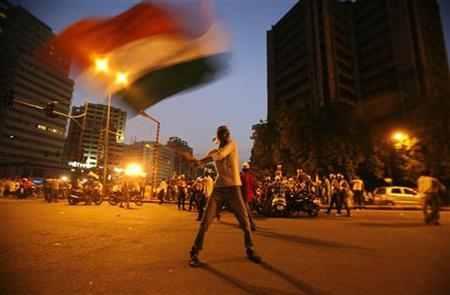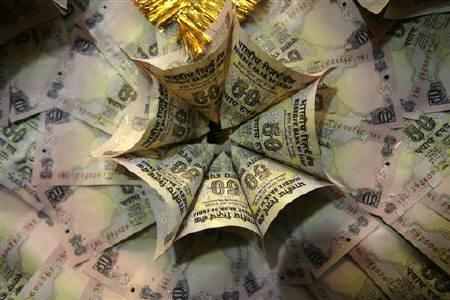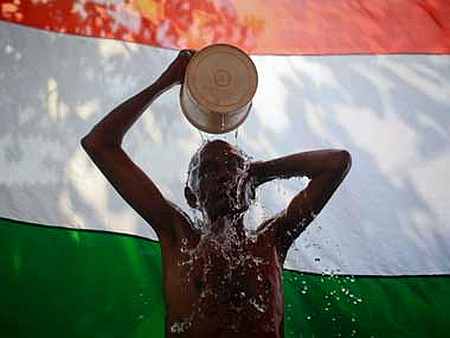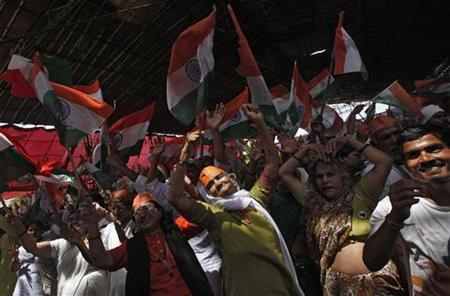Photographs: Parivartan Sharma/Reuters
The Indian economy has been plagued by several crises in the last few months. Yet, the nature of India's national conversation of late has been such that it does not adequately capture their complexity and potential for harm to the economy.
Consider, for instance, the general optimism surrounding the change of guard at the finance ministry, the prime minister's unexpectedly gung-ho response to Moody's downgrading of India's growth forecast or the widespread belief that things are so bad, they can only get better.
There can, however, be little doubt that ignoring those crises can cause further damage and prolong the pain by delaying the process of recovery.
...
A perfect storm buffets India's economy
Photographs: Adnan Abidi/Reuters
Consider first the external sector, since that is what the government is most happy talking about and blaming. Exports have weakened considerably over the past 18 months, particularly in labour-intensive sectors.
The current account deficit hit record levels last financial year as a proportion of gross domestic product; and, worryingly, India's vulnerability to foreign short-term debt has increased.
India can but hope that the crisis in Europe does not come to a head, forcing capital to flow out to what it will consider safer havens.
...
A perfect storm buffets India's economy
Photographs: Mukesh Gupta/Reuters
The last bout of external weakness, in 2008, was ridden out by a cash-rich government and strong domestic demand.
But both those are in crisis, too. India's fiscal deficit missed its target by 1.3 per cent of GDP last year – when the target was 4.6 per cent.
This year's deficit target is 5.1 per cent, and there is little reassurance that the margin by which it will be missed will be any smaller.
...
A perfect storm buffets India's economy
Photographs: Reuters
The government's fiscal crisis comes at a time when it could have used resources to address the conventional demand crisis that exists: no company is willing to invest, on the assumption that there will be no demand for its production – the familiar situation of underutilised capacity that calls out for government action, if only the government had the means to undertake any action.
To the external, fiscal, and demand crises should be added the energy crisis that was so stunningly brought home by the back-to-back blackouts recently. Even otherwise, factories across India stand idle for want of power.
India's peak power supply remains 10-12 per cent below demand. Ample generating capacity has been added, but it lies idle due to input supply problems -- there's not enough gas from Reliance, coal from abroad has become uneconomic after new taxes, and the less said about Indian coal supply troubles, the better.
...
A perfect storm buffets India's economy
Photographs: Adnan Abidi/Reuters
Meanwhile, even the power that's generated can't be sold, as many state electricity boards have failed to reform tariffs, and are deeply in debt.
The holders of those debts dominate India's financial sector, which is close to a crisis of its own.
Few believe official figures of its bad debt; and it isn't just power-sector debt that's weighing it down, although that by some accounts is over Rs 5 lakh crore, and may even be 6 per cent of GDP.
...
A perfect storm buffets India's economy
Photographs: Ajay Verma/Reuters
There continue to be concerns that corporate debt restructuring hides de facto bad loans, and bad lending to the agricultural sector is being covered up, too.
Put these five crises together, and you have a sixth: a worldwide crisis of confidence in India, reflected in the very real possibility of a downgrade to junk status -- worsening the external and financial crises.
One crisis the Indian economy could perhaps manage. But six? The India story now runs the risk of going down for a time, before it goes up.








article